Understanding global spice traditions is key to mastering authentic cooking. This comprehensive guide explores the signature spices of every continent—from Asia's bold masalas to Africa's complex blends—and provides practical tips for buying, storing, and using them in your kitchen.
Whether you're a food lover, home cook, or professional chef, you'll discover how a pinch of cumin or cardamom can transform your dishes and connect you to cultures worldwide.
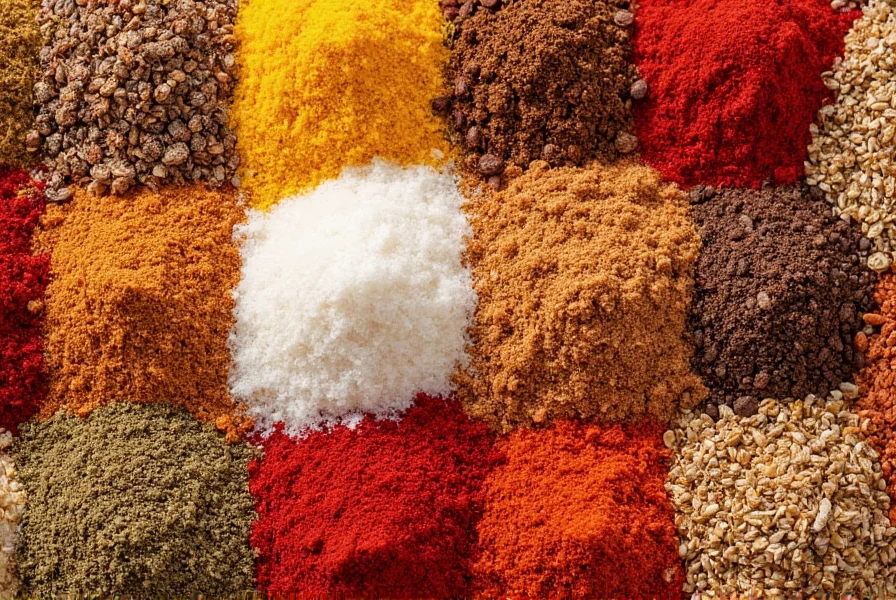
Table of Contents
- The Spice Palette: A Global Overview
- Asia: Bold, Complex, and Deeply Rooted in Tradition
- Middle East: Warmth in Every Pinch
- Europe: Subtle, Sophisticated, and Timeless
- Africa: Earthy, Vibrant, and Full of Surprise
- Americas: Fusion at Its Finest
- Oceania: Unique Blends and Indigenous Wisdom
- Buying Guide: Choosing the Right Spices for Your Kitchen
- Frequently Asked Questions About Global Spice Traditions
- Conclusion: Celebrate the World on Your Plate
The Spice Palette: A Global Overview
When we think of different kinds of cuisine, one of the most defining elements is their use of spices. From the fiery chilies of Mexico to the fragrant saffron of India, every region has its own signature spice blend that shapes its culinary identity.
Let's take a look at how these spices define global flavors:
| Cuisine Region | Signature Spices | Flavor Profile | Dishes You'll Recognize |
|---|---|---|---|
| South Asia | Turmeric, Cumin, Coriander, Cardamom | Earthy, Warm, Aromatic | Curries, Biryani, Samosas |
| Middle East | Za'atar, Sumac, Baharat | Pungent, Tangy, Smoky | Hummus, Falafel, Shawarma |
| Europe | Nutmeg, Dill, Thyme, Paprika | Subtle, Herbaceous, Balanced | Goulash, Stews, Sauces |
| Africa | Berber, Ras el Hanout, Grains of Paradise | Complex, Earthy, Piquant | Couscous, Tagine, Jollof Rice |
| Latin America | Chili Powder, Cilantro, Cacao | Smoky, Fruity, Hot | Tacos, Mole, Tamales |
| Oceania | Native Pepper, Lemon Myrtle, Bush Tomato | Citrusy, Woody, Intense | Bush Tucker Dishes, Roasted Meats |
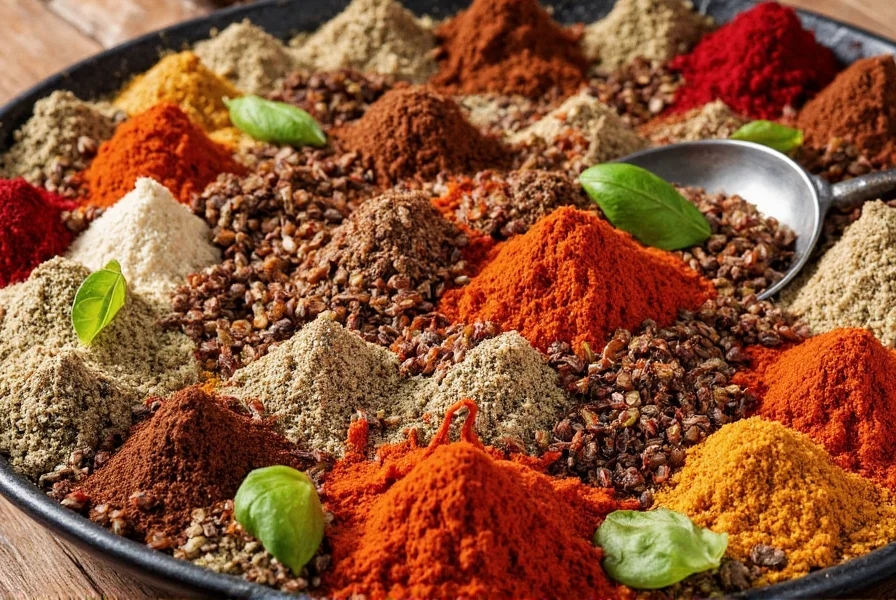
Asia: Bold, Complex, and Deeply Rooted in Tradition
Asian cuisine is a symphony of spices, especially in South and Southeast Asian cooking. Each dish tells a story of trade routes, royal kitchens, and village life.
- India: The land of masalas! Garam masala, curry powder, mustard seeds, and fenugreek are staples.
- Thailand: Thai cuisine uses lemongrass, galangal, and kaffir lime leaves to balance heat and aroma.
- China: Sichuan pepper, star anise, and five-spice powder bring warmth and depth.
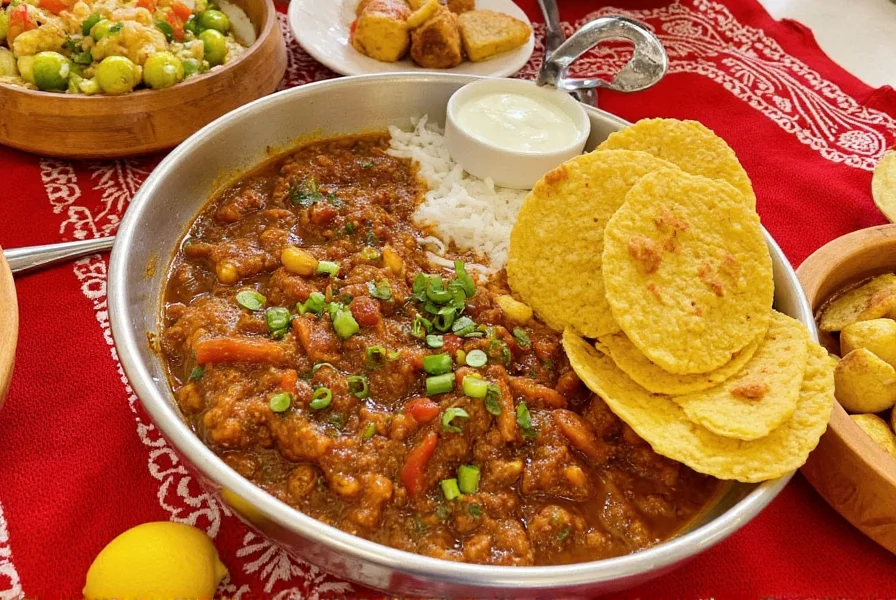
Pro Tip:
Toast whole spices before grinding them for deeper flavor. Try it with cumin seeds or coriander for curries!
Middle East: Warmth in Every Pinch
The Middle Eastern spice cabinet is rich in warm, woody, and tangy notes. Think sumac for citrus zing, za'atar for herbal punch, and baharat for smoky complexity.
- Lebanon: Za'atar is sacred—used on flatbreads, meats, and dips.
- Turkey: Sumac and red pepper flakes give Turkish kebabs their iconic color and kick.
- Iran: Saffron adds golden luxury to stews and rice dishes like tahdig.

Europe: Subtle, Sophisticated, and Timeless
European cuisine often leans toward subtlety, using herbs and gentle spices rather than bold blends. Still, there's a lot going on beneath the surface:
- France: Herbes de Provence and tarragon bring French dishes to life without overpowering the palate.
- Italy: Oregano, basil, fennel seeds, and chili flakes make Italian sauces sing.
- Eastern Europe: Paprika defines Hungarian goulash, while caraway enhances rye breads in Poland.
Pro Tip:
Add dried herbs early in the cooking process for full flavor integration, but fresh ones like parsley should be added last for brightness.
Africa: Earthy, Vibrant, and Full of Surprise
African cuisine is incredibly diverse, with each region boasting its own spice blend. North Africa brings ras el hanout and preserved lemon flavors, while West Africa favors bold combinations like grains of paradise and chili peppers.
- Morocco: Ras el hanout is the ultimate spice mix—sometimes containing up to 30 ingredients!
- Ethiopia: Berbere gives Ethiopian dishes their fire and fragrance; perfect for lentils and slow-cooked meats.
- West Africa: Scotch bonnet peppers and cameroon pepper add heat and depth to soups and stews.
Americas: Fusion at Its Finest
In the Americas, spice usage is all about fusion. From indigenous ingredients to colonial influences, the spice palette reflects centuries of cultural exchange.
- Mexico: Chili powders, oregano, and cacao come together in complex mole sauces.
- Caribbean: Scotch bonnet, allspice (called pimento), and thyme create jerk seasoning magic.
- USA: Cajun and Creole blends rule the south, featuring paprika, garlic powder, and cayenne.
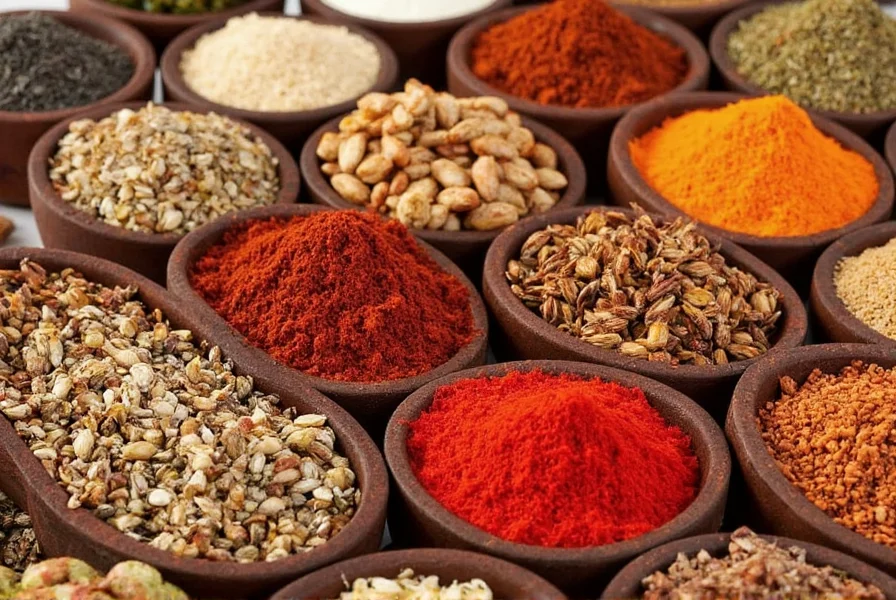
Oceania: Unique Blends and Indigenous Wisdom
Oceania might not be top of mind when thinking about spices, but native Australian ingredients offer exciting, earthy flavors that are gaining international recognition.
- Lemon Myrtle: Bright and citrusy, used in both sweet and savory dishes.
- Bush Tomato: Sweet, fruity, and intensely aromatic—great for rubs and pastes.
- Pepperberry: Often called the "Tasmanian Pepper," it offers a spicy, peppery kick.
Buying Guide: Choosing the Right Spices for Your Kitchen
Now that you've explored the world of different kinds of cuisine through spices, let's talk shop! Here's a handy buying guide to stock your pantry with global flavors.
Top 5 Must-Have Spices Across Cuisines
- Cumin: Found in Indian, Mexican, and Middle Eastern dishes. Toasting enhances flavor.
- Coriander: Used whole or ground, adds earthiness to curries and sauces.
- Paprika: Versatile and mild, perfect for European dishes and smoked varieties for Spanish paella.
- Chili Powder: Essential for Latin American and Asian heat lovers.
- Cardamom: Used in desserts and savory dishes across South Asia and the Middle East.
Spice Brands Worth Trying
| Brand | Key Feature | Best For | Recommended Product |
|---|---|---|---|
| Penzeys | Freshly packed, wide variety | Home cooks looking for quality | Spanish Smoked Paprika |
| Spice Islands | Organic and sustainably sourced | Health-conscious chefs | Ground Turmeric |
| The Spice Garden | Blends from around the world | Those who love easy-to-use mixes | Ras el Hanout Blend |
| Simply Organic | Certified organic and fair trade | Eco-friendly cooking enthusiasts | Cumin Seeds |
| Season & Co. | Artisan small batches | Chefs seeking gourmet flavors | Lemon Myrtle |
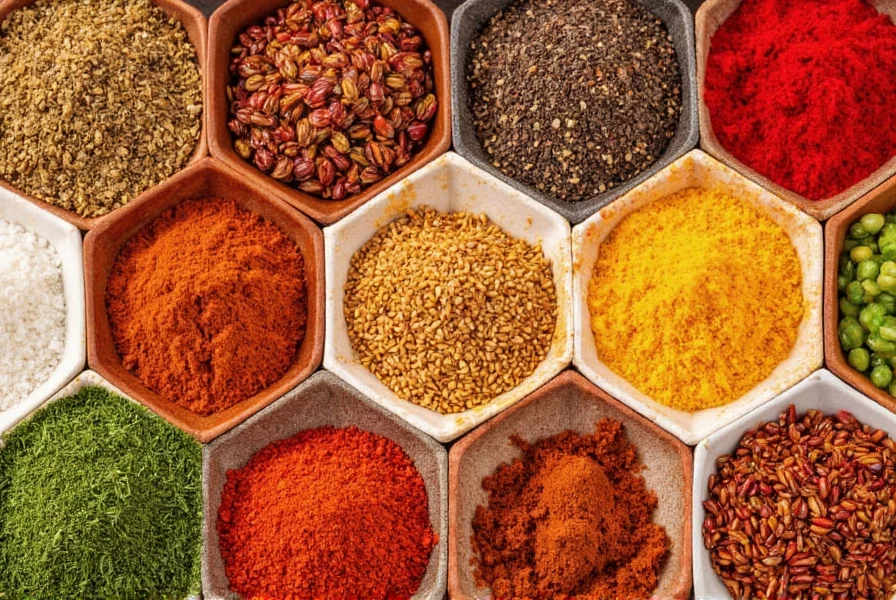
Storage Tips
- Store in airtight containers away from sunlight and moisture.
- Whole spices last longer than ground—up to 4 years vs. 2–3 years.
- Label jars with purchase dates to track freshness.
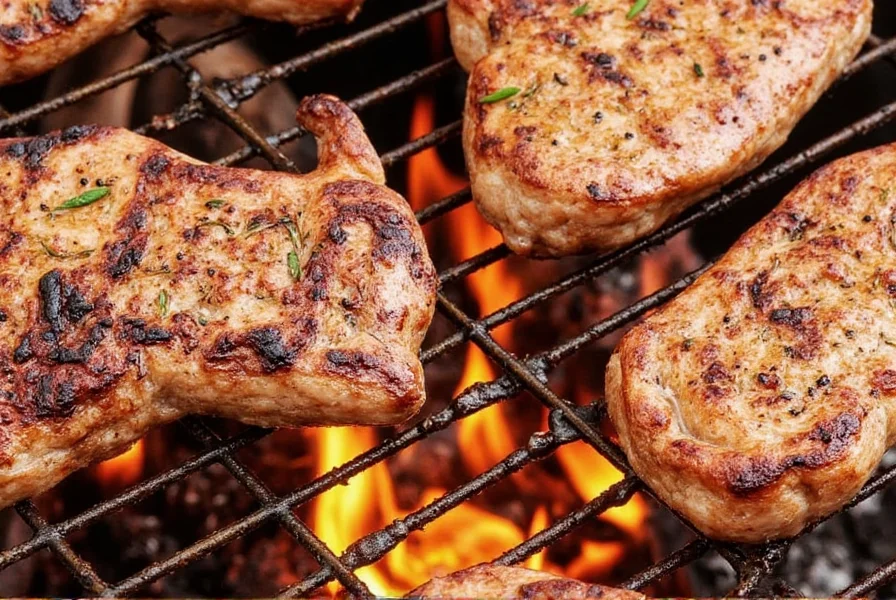
Frequently Asked Questions About Global Spice Traditions
What are the most essential spices for exploring different kinds of cuisine?
The most versatile spices across global cuisines include cumin (used in Indian, Mexican, and Middle Eastern dishes), coriander (adds earthiness to curries and sauces), paprika (perfect for European dishes and smoked varieties for Spanish paella), chili powder (essential for Latin American and Asian heat), and cardamom (used in desserts and savory dishes across South Asia and the Middle East). These five spices will give you a solid foundation for exploring multiple culinary traditions.
How do spice profiles differ between Asian and European cuisines?
Asian cuisines typically feature bolder, more complex spice combinations with pronounced heat elements like chilies and ginger, while European cuisines generally lean toward subtlety, using herbs and gentle spices rather than bold blends. For example, Indian cooking uses vibrant mixes like garam masala with turmeric, cumin, and cardamom, while French cuisine relies on more delicate herb combinations like Herbes de Provence. Asian spice profiles are often described as earthy, warm, and aromatic, while European profiles tend to be more herbaceous and balanced.
What's the difference between similar spices like cumin and coriander?
While both cumin and coriander are common in many global spice blends, they have distinct flavor profiles. Cumin has a warm, earthy, slightly bitter flavor with notes of lemon that becomes more pronounced when toasted. Coriander (the seed of the cilantro plant) has a citrusy, floral, slightly sweet taste with hints of spice. Cumin tends to be more pungent and is often used as a base note in spice blends, while coriander provides balance and complexity. In many traditional curry blends, both are used together to create depth of flavor.
How should I store spices to maintain their freshness and potency?
To maximize spice freshness and potency: store spices in airtight containers away from direct sunlight and moisture; keep them in a cool, dark place like a pantry rather than above the stove; label jars with purchase dates to track freshness (whole spices last up to 4 years while ground spices last 2-3 years); and avoid storing spices in the refrigerator where moisture can degrade quality. For the longest shelf life, consider buying whole spices and grinding them as needed rather than purchasing pre-ground versions.
What are some traditional spice blends I should try from different regions?
Some essential traditional spice blends to explore include: garam masala from India (warm spices like cardamom, cloves, and cinnamon), ras el hanout from Morocco (a complex blend that can contain up to 30 ingredients), za'atar from the Middle East (thyme, sumac, and sesame seeds), berbere from Ethiopia (chili peppers, garlic, ginger, and fenugreek), and five-spice powder from China (star anise, cloves, Chinese cinnamon, Sichuan pepper, and fennel seeds). Each of these blends represents the unique flavor profile of its region and can transform simple ingredients into authentic regional dishes.
How can I tell if my spices have gone bad?
Spices don't technically spoil but lose potency over time. Signs your spices may have gone bad include: faded color (especially noticeable in paprika and turmeric), weak aroma (if you can barely smell it when you open the container), clumping (a sign of moisture exposure), or visible mold. A simple test is to rub a small amount between your fingers and smell it—fresh spices should have a strong, characteristic aroma. If your curries or stews lack depth of flavor despite using the right amounts, it might be time to replace your spices.
What's the best way to incorporate global spices into everyday cooking?
Start by incorporating one or two global spice blends into familiar dishes. For example, add a teaspoon of garam masala to your next roasted vegetable dish, use za'atar as a seasoning for grilled chicken instead of just salt and pepper, or stir a pinch of ras el hanout into your tomato sauce. Toasting whole spices before use dramatically enhances their flavor—try this with cumin seeds for rice dishes or coriander seeds for soups. Remember that many global cuisines build flavor gradually, so add spices at different stages of cooking rather than all at once.
Conclusion: Celebrate the World on Your Plate
Whether you're making a comforting bowl of tagine or spicing up your tacos, understanding global spice traditions opens doors to creativity and connection. Each pinch of spice carries history, geography, and culture into your kitchen.
So next time you reach for that jar of turmeric or cumin, remember—you're not just adding flavor. You're bringing the world to your dinner table.

Final Thought
Keep experimenting, keep tasting, and most importantly—keep spicing up your life!










 浙公网安备
33010002000092号
浙公网安备
33010002000092号 浙B2-20120091-4
浙B2-20120091-4